Friday, 6 May 2011
Monday, 28 March 2011
Jorinde Voigt - Grammatik
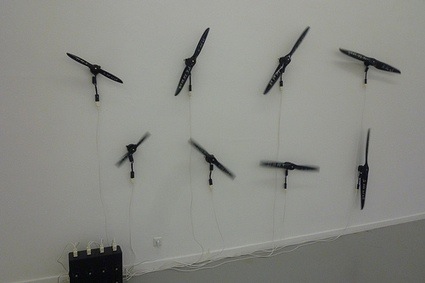
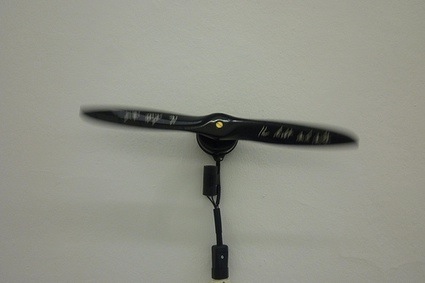
Jorinde Voigt's Grammatik combines several parameters, such as spinning aeroplane propellers, writing on the propellers (64 grammatical possibilities, declination of the personal pronouns, who loves who, who doesn't love who) and the size of the blades (the first person singular corresponds to the biggest blade. The third person plural corresponds to the smallest blade). Next to that, the installation defines the grammatical system even more precise by the declination of the rotation speed, 0 to maximum, individually controllable speed (the artist does not specify how fast each blade has to turn; every speed within the possible range is correct) and the declination of the direction of rotation: turning to the left or to the right. Technically, this corresponds to whether the blade turns away from or towards the observer.
(source)
Joyce Hinterding - Aura
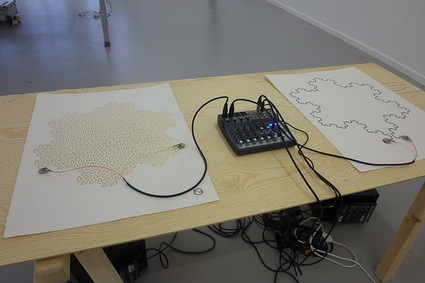 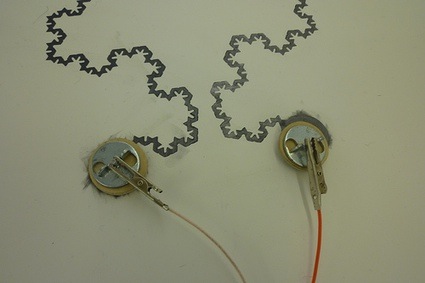 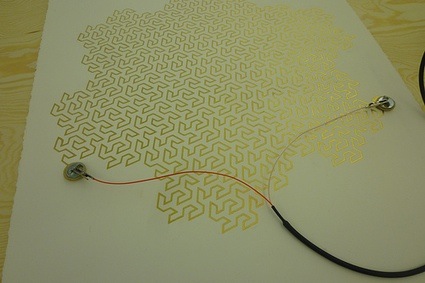 Aura is made of graphite and gold drawings which, when connected to a sound system, become fractal antennas. As soon as i took off my camera to take a picture, i realized that the drawings made audible the presence of electromagnetic fields within the gallery. A text about the work explains that tracing one's finger over Hinterding's lines produces electrical sounds akin to those emitted by a theremin. (source) |
Fernando Orellana - Elevator Music
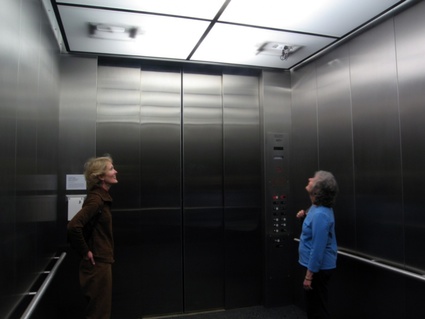
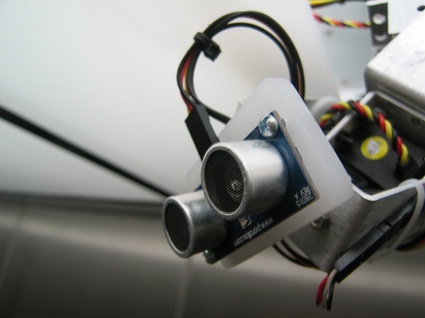
Elevator's Music by Fernando Orellana from jackadam on Vimeo.
The site-specific installation “Elevator’s Music”, visits the topic of synthetic creatures becoming sentient. What if centuries from now, we had the technology to make any machine self-aware? In this distant future, if an elevator could be self-aware, what would it be like? What might an elevator think about, what might it dream about, what might it sing about.
Hidden within the translucent ceiling panels of an elevator are installed four servo-driven mechanisms. Controlled by microprocessors and networked together, each robot includes a small speaker for sound output, a microphone and sonic sensorial input, and is designed with three axes of rotational freedom. Through this design, the mechanisms act as the vocal cords, the eardrums, and the appendages of the elevator. Additionally, each robot can individually “emerge” from within the elevator’s interior by opening a sliding door in the ceiling.
At times some robots will hide within the safety of the elevators ceiling, perhaps responding to passengers that are too loud or too active. During moments of relative inactivity, the robots might all come out of their shells, displaying emergent behavioral patterns driven by the echoes, whispers, murmurs, and motions of the elevator’s passengers.
This emergent behavior is also reflected in the sounds the robots produce, which are generated in “real-time” by the microprocessors. In this way, the resulting real-time soundscape can be said to be elevator music. More poignantly, one could say it was the Elevator’s Music.
The images of “Elevator’s Music” on this site document the installation of it in 2007 at the Tang Teaching Museum at Skidmore College in Saratoga Spring, NY.
Labels:
Installation,
Research,
Sculpture,
sound
Thursday, 3 February 2011
Subscribe to:
Posts (Atom)





